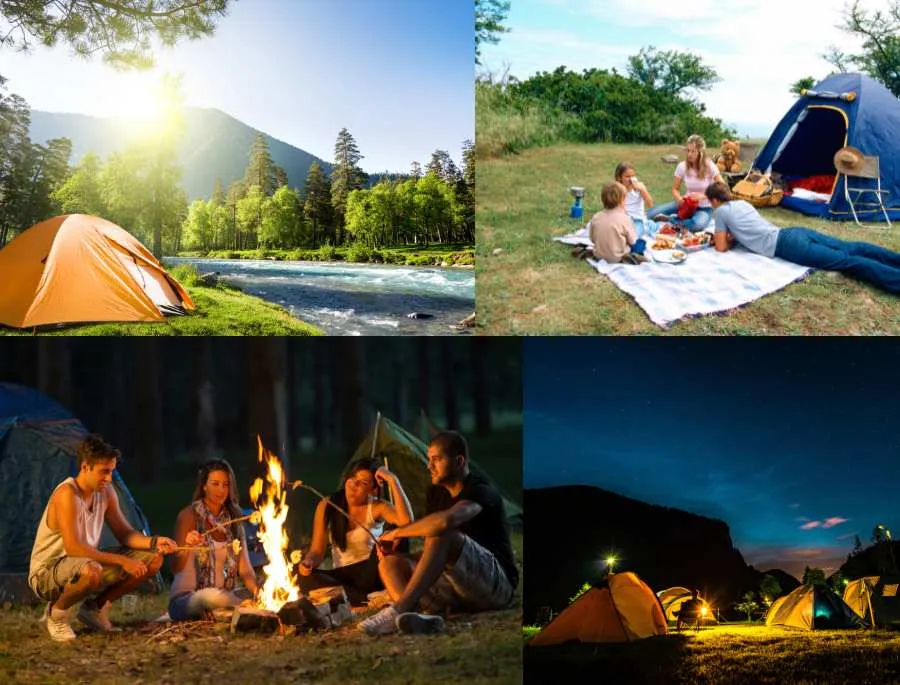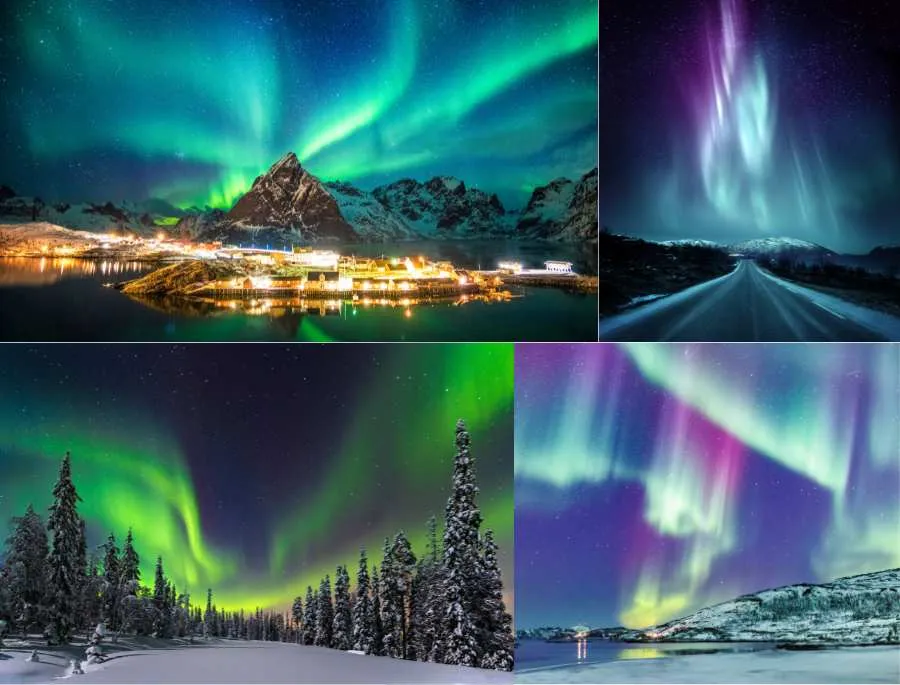Alaska, the land of majestic mountains, stunning glaciers, and untouched wilderness, is a dream destination for adventurers. Denali National Park, home to North America’s tallest peak, Denali, is a true gem of Alaska, captivating visitors with its breathtaking beauty and thrilling challenges. However, the wild beauty of Denali comes with harsh weather conditions, particularly strong winds, which can pose significant difficulties for those camping in the heart of nature. This article will share essential tips for pitching tents effectively in strong winds in Alaska, allowing you to enjoy your adventure safely and comfortably.

Denali rises in the distance—a symbol of Alaska’s wild and untamed beauty.
Harsh Weather in Alaska and Challenges for Campers
Alaska is renowned for its unpredictable and extreme weather, especially in high-altitude areas like Denali. Strong winds are one of the most concerning aspects of the weather for campers. At Denali, winds can reach speeds of up to 100 mph (160 km/h) or even more, creating whirlwinds that pose numerous challenges:
- Tent Damage: High winds can rip tent fabric, blow tents away, or bend and break their poles if they’re not set up properly.
- Hypothermia Risk: Strong, cold winds can lower the temperature inside your tent, increasing the risk of hypothermia in Alaska’s chilly conditions.
- Difficulty in Daily Tasks: Cooking, personal activities, and movement around the campsite become incredibly challenging in high winds. The persistent sound of howling winds can disrupt sleep as well.
- Potential Danger: In extreme wind conditions, tents may get blown away completely along with your belongings, posing dangers to campers.

The dense snow blanketing Denali’s peaks demonstrates the region’s freezing and harsh climate.
To overcome these challenges, it’s crucial to prepare thoroughly and master the techniques of pitching a tent in strong winds.
Choosing the Right Tent for Alaska’s Windy Conditions
Selecting the right tent is the foundational step to ensuring safety and comfort while camping in strong winds in Alaska. Here are some important criteria to consider when choosing a tent:
- Aerodynamic Design: Opt for tents with aerodynamic designs, featuring low-profile, curved dome shapes to minimize wind resistance. Tunnel or dome-shaped tents are generally better at withstanding strong winds than box-shaped ones with upright walls.
- Durable Poles: Choose tents with poles made of sturdy materials like aluminum or aluminum alloys, which can withstand heavy winds without breaking. The diameter of the poles should also be sufficient to ensure sturdiness.
- Water-Resistant and Windproof Fabric: The tent’s fabric should be made of high-quality waterproof materials (with a waterproof rating of at least 2,000mm) and wind-resistant options like polyester or nylon ripstop. PU or silicone coatings can enhance the fabric’s resistance to both water and wind.
- Strong Stakes and Guy Lines: Tent stakes should be made of aluminum or steel, with an appropriate length and thickness to anchor firmly into the ground. Guy lines should be durable, non-stretchy, and able to endure pressure. Adjustable guy lines work best for securing the tent tightly.
- Multiple Stake and Guy Line Points: Tents that feature multiple stake and guy line attachment points will be more stable in high winds. Ensure your tent includes plenty of these points, and make sure to use them all.

Proper preparation, including selecting suitable tent equipment, is key to a successful camping trip in Alaska.
Additionally, bring extra stakes, guy lines, and a hammer or mallet to fasten stakes securely, just in case they are needed.
How to Pitch a Tent in Strong Winds in Alaska
Setting up a tent in blustery weather requires careful planning, precision, and skill. Here’s a step-by-step guide to safely and effectively pitch your tent in Alaska’s windy environment:
1. Choose the Right Spot:
- Seek Wind Shelters: Look for natural wind barriers such as large rock formations, dense bushes, or low ridges.
- Avoid Exposed Areas: Steer clear of hilltops and open fields where winds are strongest.
- Understand Wind Direction: Determine the direction of the wind and set up your tent so the smallest surface area (either the front or back) faces into the wind.
2. Pre-Setup Preparation:
- Lay Down a Groundsheet: Place a footprint beneath the tent’s area to shield its base from moisture and sharp objects.
- Organize Gear: Store essential items inside the tent before setting it up to add weight and stability during assembly.
- Gather Supplies: Have stakes, guy lines, and a hammer ready for quick deployment.
3. Assemble Frame and Anchor Tent:
- Swiftly Assemble Framework: Build the tent structure as quickly as possible according to the manufacturer’s instructions to prevent wind-related mishaps during setup.
- Anchor Tent Corners: Secure all four corners of the tent using stakes immediately after setting up the framework. Drive stakes into the ground at a 45-degree angle outward.
- Stretch and Attach Outer Fabric: Extend the tent’s fly sheet and attach it tightly to the frame. Secure it with additional stakes and guy lines for extra stability.
4. Reinforce Tent with Guy Lines:
- Use All Available Guy Lines: Make full use of all attached guy lines that come with the tent. Anchor them tightly with stakes to distribute wind impact evenly.
- Adjust Tension Properly: Adjust the guy lines until they’re tight but not overly taut to avoid tearing. Loose lines won’t secure properly.
- Weigh Anchor Points: In extreme cases or on soft ground, attach additional weights like rocks, logs, or gear-filled backpacks to the guy lines.
5. Inspect and Adjust:
- Check Stability: Once set up, test the tent’s sturdiness by gently shaking it and inspecting anchor points.
- Reinforce as Needed: Adjust stakes or guy lines if you notice instability.
- Regularly Monitor: Continuously check the tent’s setup during strong winds to address potential weak points.

Camping in the serene wilderness of Denali creates unforgettable memories, but knowing how to handle strong winds is crucial.
Important Notes:
- Practice First: Practice pitching your tent at home or under normal conditions beforehand for familiarity with assembly.
- Read Manufacturer Guidelines: Review and follow the tent manufacturer’s instructions carefully.
- Safety First: Prioritize safety—if conditions become too dangerous, find alternative shelter rather than attempting to pitch a tent.
Other Activities at Denali National Park
Aside from camping, Denali National Park offers various exciting activities for visitors:
- Mountaineering: Denali is a paradise for adventurers with numerous trails of varying difficulty levels, especially the iconic climbs to the Denali summit.
- Hiking: The park boasts hundreds of miles of scenic hiking trails suitable for all fitness levels, providing opportunities to explore breathtaking landscapes and observe wildlife.

The walking trails in Denali present opportunities to immerse yourself in the park’s magnificent wilderness.
- Wildlife Watching: Denali is home to incredible wildlife such as grizzlies, caribou, wolves, and Dall sheep. Visitors can join wildlife tours or explore independently through trails.
- Shuttle Bus Tours: The park’s shuttle bus system offers convenient access to Denali Park Road, providing iconic vistas and potential wildlife sightings.
- Northern Lights Viewing: In winter, Denali becomes a prime location for witnessing the spectacular aurora borealis illuminating Alaska’s skies.

The aurora lighting up Alaska’s winter skies offers an unforgettable spectacle.
Conclusion
Camping in Alaska—particularly in Denali National Park—is a unique experience that immerses you in pristine wilderness and tests your resilience. The harsh weather, especially strong winds, requires thorough preparation and expertise in pitching tents. By selecting suitable gear, choosing sheltered spots, and carefully following tent setup techniques, you can enjoy the adventure safely and comfortably. May your journey to the magical land of Alaska be one filled with unforgettable moments!